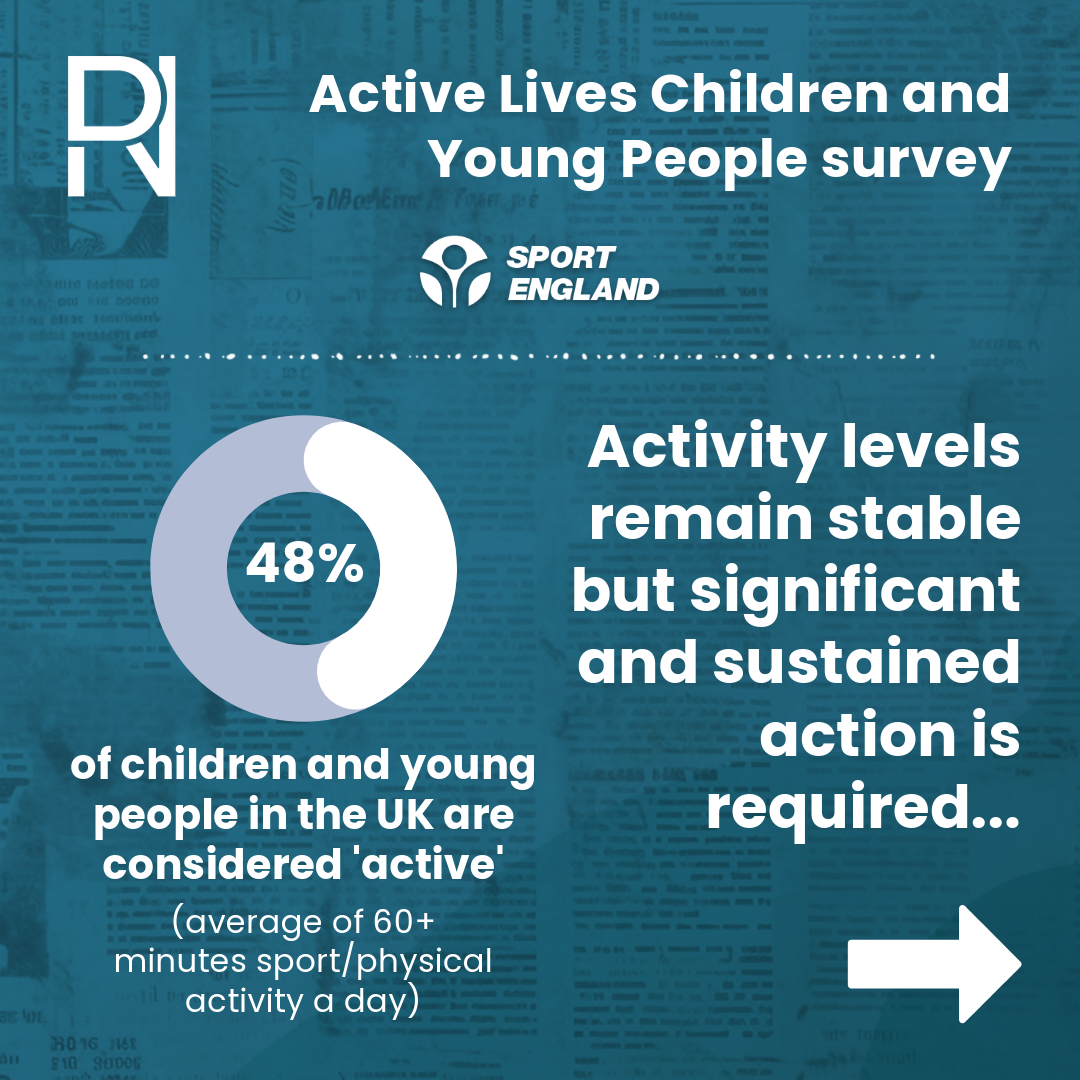Health inequality crisis continues for young people
Last week, Sport England released its annual Active Lives Children and Young People survey – a fundamental date in the diary for all operating in this sector.
Yet again, concerning data has highlighted the sustained battle to get young people active. 52% of children and young people are doing less than the recommended amount of activity a day. Boys are still more active than girls with affluence and race a key factor.
The worrying consistency of these annual reports is the rise in health inequalities. Those from a white or mixed background are more likely to be active than Black or Asian children, a trend that has continued over the years, worsening since the COVID-19 pandemic.
The pandemic exacerbated the inequalities - with least affluent, Asian people, disabled people, and people with long-term health conditions all less likely to be active than other groups. But surely, we expected more progress by now?
A small glimmer of hope, however, is that the general situation generally isn’t getting worse, with overall activity levels around the same as the previous year, but we’re still not back to pre-pandemic levels. We can’t celebrate ‘not getting worse’, however, and the inequality crisis remains alarming.
There are significant learnings this year around motivations to being active, finding that those with three or more positive attitudes towards physical activity were more active. However, among the disparities are younger children being less active, with many having a knock-on effect from the pandemic.
Sport England chief executive, Tim Hollingsworth, said: “For the pandemic generation, COVID-19 has had a fundamental impact. The data shows that, for the children whose impressionable early years were defined by lockdowns and lack of activities, attitudes towards sport and physical activity are distinctly negative.
“The challenge is huge - with issues such as rising obesity levels and rising cost-of-living damaging children’s health prospects too – but so is the opportunity. An active generation is critical to the government’s missions because active children turn into active adults, helping our NHS and improving the long-term health and wealth of our country.
“Sport England will continue to play its part in solving these challenges, but we cannot do it alone. We look forward to working with the government and everyone who cares about future generations to drive the changes we need.”
The full report is available here.
Share via:

Inactivity is quietly draining our economy, health system and communities. Sport England’s latest research is a wake-up call: equal access to sport and exercise could unlock £20 billion in savings and productivity gains for the UK. That’s not just a health issue, it’s an economic imperative. The data is compelling: For every £1 invested in grassroots sport, £4.38 is returned in savings and benefits. Grassroots sport contributes £36 billion annually to the economy and generates £14 billion in tax revenue. Yet inequalities persist. Those with disabilities, lower incomes, and black communities remain the least active. At New Reach, we believe the solution is clear: movement. Sport isn’t just about participation; it’s about inclusion, opportunity, and impact. Every mile run, every game played, every community initiative matters, not just for health, but for economic resilience and social cohesion. As the government prepares its Budget, the questions are: How do we make sport accessible for everyone? How do we turn participation into a national priority? Because the cost of doing nothing is too high. At New Reach, we help brands, rights holders, and organisations turn this challenge into opportunity. Through strategic PR, creative campaigns, and partnerships, we amplify the benefits of sport - driving participation, tackling inequalities, and delivering measurable impact for communities and the economy.











